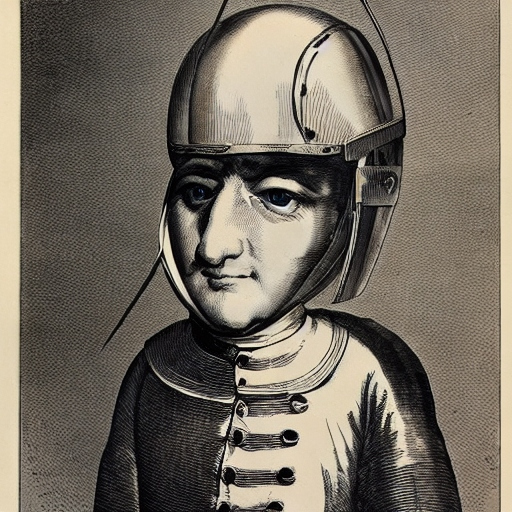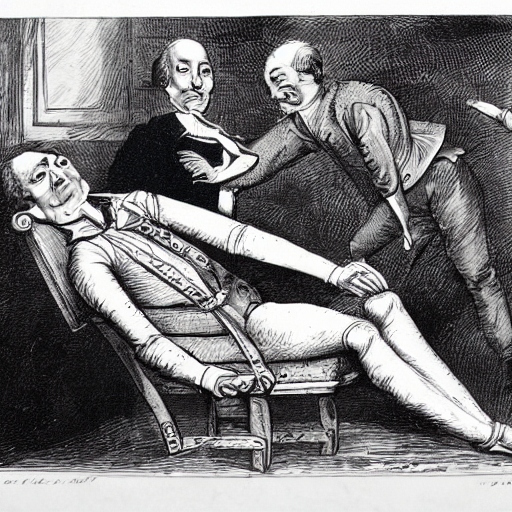
How to Spot the Warning Signs of a Head Injury
Overview of Head Injury
Head injury is a broad term used to describe any type of trauma that affects the brain and can range from mild to severe. It can occur due to a variety of causes including falls, motor vehicle collisions, sports injuries, gunshots, or other violent assaults. The most common types of head injuries are concussions, contusions (bruising), lacerations (cuts), skull fractures and traumatic brain injuries. Depending on the severity of the injury, it may be classified as mild (concussion) or severe (traumatic brain injury). Risk factors for head injury include age – young children and elderly adults are particularly vulnerable – alcohol use/abuse; participation in high-risk activities such as contact sports; not wearing protective gear when participating in dangerous activities; riding motorcycles without helmets; and being involved in car accidents where seat belts were not worn.
First Aid for Head Injury
Once the situation has been assessed and it is determined that a head injury has occurred, it is important to check for signs of consciousness. If the person appears unconscious or unresponsive, call the ambulance immediately. Do not move them unless they are in danger – wait for medical professionals to arrive on site. Once you have confirmed that the person is conscious and responsive, gently clean any wounds with water and soap before bandaging them securely. Be aware that even small lacerations can be dangerous if left untreated due to the risk of infection; always wear gloves when cleaning wounds.
It’s equally important to monitor for signs of concussions such as dizziness, nausea, confusion or memory problems. Ask simple questions such as name/date/time etc., which may help determine whether further medical attention is required; if so, seek emergency care right away. In some cases mild concussion symptoms may be delayed by several hours after an accident occurs – don’t forget about checking in with your loved one later on in case more severe symptoms develop over time! Finally, remember to follow up with your doctor soon afterwards just to make sure everything is okay – never underestimate how serious even minor head injuries can be!
Diagnosis of Head Injury
For a more accurate and comprehensive diagnosis of head injury, imaging techniques such as CT scans or MRI can be used to assess the extent of brain damage. CT scans provide cross-sectional images of the brain while MRIs offer a detailed, 3-dimensional picture that can help identify areas of swelling or bleeding. Additionally, blood tests may be ordered to check for signs of infection or inflammation in addition to measuring levels of substances like glucose which could indicate neurological problems.
Cognitive tests are also often employed in diagnosing head injuries – these involve tasks designed to assess memory and concentration abilities as well as physical examinations such as reflex testing and balance assessments. Finally, neuropsychological exams are sometimes performed – this involves an extensive battery of psychological tests that measure cognitive functioning along with mental health status (e.g., depression/anxiety). All these approaches combined give medical professionals a complete picture on which they can base their diagnosis and treatment plan accordingly.
Treatment of Head Injury
In the treatment of head injuries, medication is often prescribed to reduce inflammation and pain as well as to prevent further damage or infection. Common medications include ibuprofen, acetaminophen and steroids which may be administered orally or intravenously depending on the severity of the injury. In some cases, anticonvulsant drugs may also be employed in order to control seizures that can occur due to head trauma.
Surgery is sometimes necessary in cases where more severe brain damage has occurred; procedures such as craniotomy (removing a section of skull bone) or ventriculostomy (draining fluid from the brain) are commonly used for this purpose. Surgery may also be required if there are fractures in other areas such as the spine, jaw or facial bones associated with a head injury – these must all be addressed before rehabilitative therapy can begin.
Rehabilitative therapy is an important part of recovering from any type of head injury – it involves physical and cognitive exercises designed to help bring back lost functions like speaking/reading/writing etc., restore balance and coordination issues related to movement, increase muscle strength & stamina etc., all aimed at helping patients return back to their normal activities of daily living. Depending on individual needs and goals, therapists may employ a variety of approaches including occupational therapy (OT), speech-language pathology (SLP), physical activity programs etc.; they will work closely with both patient and family members throughout this process so everyone involved understands how best progress can be achieved over time!
Prevention of Head Injury
Prevention of head injury is the best course of action. Wearing a seatbelt in motor vehicles and using protective gear when participating in dangerous activities such as contact sports can help reduce risk significantly. Additionally, avoiding hazardous activities like riding motorcycles without helmets or engaging in extreme stunts/tricks should be avoided whenever possible as these carry an even higher risk for head trauma.

Parents can play an important role in teaching children about safety when it comes to preventing head injuries – providing education on proper equipment fitting, demonstrating how to wear a helmet correctly, and reinforcing the importance of following safety guidelines during any type of physical activity will go a long way towards instilling good habits that can last into adulthood. Educating older adults on fall prevention techniques such as installing handrails along staircases and ensuring rooms are well-lit are also important steps that caregivers can take to help protect their loved ones from serious harm due to slips or trips.

Finally, encouraging people to abstain from alcohol use/abuse is another key factor in reducing the chances of sustaining a head injury; alcohol impairs judgment which increases the likelihood that someone may engage in risky behaviour with potentially devastating consequences. Keeping these simple tips in mind could save lives!
Conclusion
In conclusion, head injuries are all too common and the risk factors associated with them should not be ignored. It is important to be aware of the signs and symptoms of a head injury, as well as how to best treat and prevent them. In cases where a head injury has occurred, it is important to seek medical attention immediately – even mild concussions can have serious long-term implications if left untreated. Additionally, wearing protective gear when engaging in high-risk activities such as contact sports or riding motorcycles without helmets cannot be stressed enough; this simple step could save countless lives every year! Finally, encouraging people to abstain from alcohol use/abuse may also reduce the chances of sustaining a traumatic brain injury due to impaired judgment while under the influence. Taking these steps will go far towards keeping ourselves safe from harm – always remember that your health comes first!

